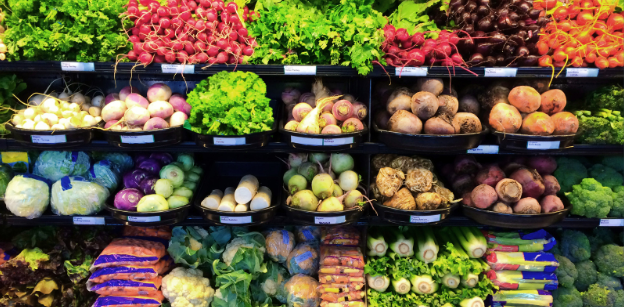
Government actions will tame domestic food prices but heighten global food inflation
Considering food makes up more than half of the consumption basket of the average Indian consumer, high food prices and elevated upside risk to these prices over the medium term will put pressure on low- and middle-income consumers’ ability to spend on other items, such as services, household goods, and personal care. Spending by high-income consumers should continue to remain largely unaffected by changes in food prices. As a result, demand in the premium consumer goods and service segment will remain robust, while firms playing in the mass market segment will likely see a hit to demand due to these drastic changes in food prices.
The spikes in food prices will have a large impact on the supply and cost of essential agricultural commodities for firms in the food and beverage sector in India and globally. Firms in this sector in India should expect continued margin pressure and supply disruptions in the next few months before cooling measures start to take effect. F&B firms outside India will likely see a longer period of cost pressure, as steps taken by the Indian government will push up global prices of key agricultural commodities, especially rice and onions. This risk of high food prices is likely to become a regular and exacerbated occurrence over the long term due to erratic weather patterns and ad hoc policy regulations.
Overview
While headline consumer prices in India were trending down between January and June this year (5.4% YOY average), the July print has surprised many, reaching 7.4% YOY. The sharp increase in prices was primarily due to unpredictable rainfall that caused volatility in food prices, most notably for vegetables, spices, pulses, and cereals.
In light of inflationary concerns in the run-up to an election year, the government has taken steps to control domestic inflation. These actions include banning the export of key rice varieties and imposing a large export tax on onions. The government is also considering additional measures to rein in domestic food prices.
Our View
Considering the government’s focus on state elections this year and the national election next year, it is likely to make every effort to tame domestic food inflation levels. We forecast average inflation in 2023 to reach 6% YOY in 2023 and fall to 4.7% YOY in 2024. Given that the recent spike in food prices is attributed to erratic rainfall patterns, firms should account for volatile food prices to be an annual occurrence over the long term. While the government aims to ease domestic food prices through export curbs, this will put severe upward pressure on prices of food, especially rice, given that India accounts for 40% of its global supply.
The recent spike in food prices has also raised the likelihood of an additional 25-basis-point interest rate hike by the Reserve Bank of India, following a consistent benchmark rate of 6.5% since February.
At FrontierView, our mission is to help our clients grow and win in their most important markets. We are excited to share that FiscalNote, a leading technology provider of global policy and market intelligence has acquired FrontierView. We will continue to cover issues and topics driving growth in your business, while fully leveraging FiscalNote’s portfolio within the global risk, ESG, and geopolitical advisory product suite.
Subscribe to our weekly newsletter The Lens published by our Global Economics and Scenarios team which highlights high-impact developments and trends for business professionals. For full access to our offerings, start your free trial today and download our complimentary mobile app, available on iOS and Android.

